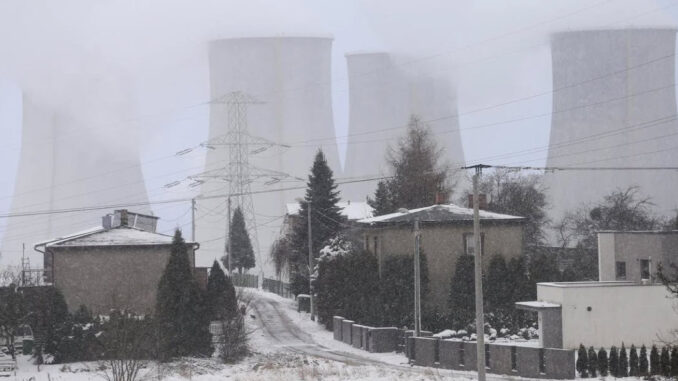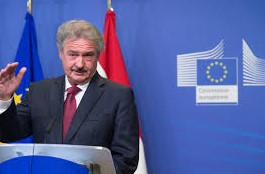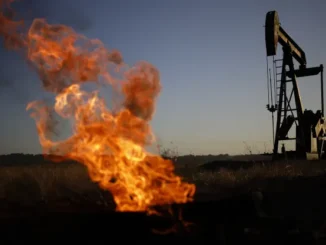
Energy News Beat Publishers Note: This was originally run on Feb 17, 2021. This is heating up as there are more talks, concerns, and political issues around Russia to Germany pipeline.
The Polish government wants to start producing nuclear energy in 2033 and has agreed to deals with the US and France. But Germany is increasingly alarmed by its neighbor’s energy plans.
Poland is working towards reducing its dependence on coal and forging ahead with plans to start producing nuclear energy. Its Polityka Energetczna Polski (PEP) strategy, which the government approved earlier this month and is set to begin in 2026, includes the construction of six reactors in two locations. According to the plan, the first reactor will begin operation in 2033 and all six should be up and running by 2043.
The EU member has to find new sources of energy in order to meet the bloc’s climate, energy and environmental targets. Poland currently depends on coal for 70% of its energy and is thus one of the most polluting EU states.
But Poland’s energy transition is not driven by external pressure alone. Brown coal mining in central Poland, which currently supplies 20% of the country’s energy, is set to be phased out by 2035.

There will also be a shortage of natural gas after an agreement with Russia expires at the end of next year. Russian gas currently covers 5% of Poland’s energy needs. But because of its rising cost and political tensions with Moscow, Warsaw does not want to extend the agreement.
A seemingly perfect solution
Nuclear reactors are considered by many to be the perfect solution. Plans to develop nuclear energy go back to the 1970s and construction had begun on two reactors of Soviet design in Zarnowiec, some 80 kilometers (50 miles) northwest of Gdansk, but was stopped after the 1986 Chernobyl disaster. All subsequent attempts to relaunch the project failed. Now, the new reactors will probably be built in Zarnowiec and nearby Lubiatowo-Kopalino.

However, Poland cannot fund the reactors, whose capacity will be six to nine gigawatts and which are estimated to cost €30 billion ($36 billion). Last year, Prime Minister Mateusz Morawiecki said that the ideal partners for the project, both in terms of technology transfer and funds, would be “proven partners from NATO and the western world.”
US or France?
An ideal partner for Poland would be the US. Former President Donald Trump raised great hopes when he visited his Polish counterpart Andrzej Duda in June 2020 and promised support from US companies. The prime minister said that the meeting had “moved Poland in the right direction.”
The two countries signed a preliminary agreement to cooperate on the development of Poland’s nuclear energy program less than a month before Trump’s election defeat.

But with Trump out of office, Poland lost its closest ally. Now France has come into play. On February 2, the day the government approved the energy strategy, French Foreign Trade Minister Franck Riester visited Poland to offer support.
The CEO of the state-owned Electricite de France (EDF) spoke to the Polish media and proposed a deal to fund two-thirds of the project while promoting the European Pressurized Reactor (EPR), which is already in operation in Taishan, China. With a capacity of over 1000 MW (1 GW) the gigantic reactor corresponds to what the government is looking for.
Potential risks
However, energy expert Marcin Roszkowski from the Polish think tank Jagiellonian Club disagrees. “There are now much smaller reactors, with a capacity of 50 and 100 MW,” he told DW. “These are modular reactors that can be combined. They can be dispersed across larger areas and supply individual cities and factories with energy.”

“This would prevent a major nuclear disaster,” he said. He explained that the smaller reactors, which are currently used on nuclear-powered icebreakers, might be commercially available in a few years. In 2019, Polish billionaire Michal Solowow offered to build such reactors, signing an agreement to cooperate with the Japanese-US giant GE Hitachi. Other experts said that Poland’s plans went against the current trend in the EU to move towards gas and renewable energies.
“With current technologies, it would not be difficult to raise the share of renewables in the energy mix to 80%. The missing 20% is due to the Polish winter, when there is little wind and little sun,” Marcin Popkiewicz, a nuclear physicist at Warsaw University, told DW, pointing out that it’s also very expensive to build nuclear power plants. “For customers, the cost of nuclear energy could be five times the cost of renewables.”
Lagging behind
The government’s energy strategy already includes renewables, but progress has been slow. Their share of the energy mix has stagnated at 14% for years. This is lower than the EU average of 20% (2020). This could change in 2025 when Poland’s first wind farm on the Baltic coast goes into operation. It’s slated to reach a capacity of 8 GW by 2040.

The main problem that the government faces is how to phase out the use of black coal, which currently comprises 50% of the energy mix. It will continue to be mined until at least 2050. Over 100,000 jobs depend on the sector, which is why the government is hesitant to close the pits.
Paradoxically, nuclear energy, which is “clean” in terms of CO2 emissions, could slow down the process even further. If Polish CO2 emissions fall because of the nuclear power plants, there will be less pressure from the EU to reduce coal production.

Germany wants to be kept in the loop
Poland’s plans are already causing resentment in neighboring Germany. According to an expert report commissioned by the Green Party’s parliamentary faction in the German Bundestag in January, the Polish nuclear power plants, just a few hundred kilometers from the German border, would pose a high risk to the population.
“Experts evaluated everything on the basis of weather data over the past three years. There is a 20% probability that Germany would be affected by an accident at the planned nuclear power plant,” the chairwoman of the Bundestag Committee on the Environment, Ursula Kotting-Uhl, told DW. “In the worst-case scenario, 1.8 million Germans would be exposed to radiation of over 20 millisieverts. At that level, we would have to start evacuating. Berlin and Hamburg could be affected, which are densely populated.”
The Polish Ministry of Climate and Environment insists that an environmental impact assessment has been carried out.



